
JOURNAL OF MATERIALS SCIENCE
Scope & Guideline
Elevating Understanding in Materials Science
Introduction
Aims and Scopes
- Materials Synthesis and Processing:
The journal covers a wide range of synthesis techniques, including but not limited to sol-gel processes, hydrothermal synthesis, electrospinning, and additive manufacturing. These methodologies are essential for developing new materials with tailored properties. - Characterization Techniques:
Research articles often utilize advanced characterization methods such as electron microscopy, X-ray diffraction, and spectroscopic techniques to elucidate the structural, thermal, and mechanical properties of materials. - Functional and Smart Materials:
The journal emphasizes the development of functional materials, including smart materials that respond to environmental stimuli, and their applications in various fields such as electronics, energy storage, and biomedical devices. - Nanomaterials and Nanocomposites:
A significant focus is placed on the study of nanostructured materials and nanocomposites, exploring their unique properties and potential applications in catalysis, sensors, and energy conversion. - Biomaterials and Environmental Applications:
The journal also addresses the growing demand for sustainable materials and the development of biomaterials for medical applications, as well as materials designed for environmental remediation.
Trending and Emerging
- Sustainable and Green Materials:
There is a growing emphasis on the development of eco-friendly materials and processes, including biodegradable polymers and waste-derived materials, reflecting a broader societal push towards sustainability. - Advanced Characterization Techniques:
The integration of advanced characterization techniques, such as in situ observation and machine learning applications for materials design, is becoming more prevalent, allowing for deeper insights into material behavior. - Energy Storage and Conversion Materials:
Research focused on materials for energy storage (batteries, supercapacitors) and conversion (photovoltaics, fuel cells) is rapidly expanding, driven by the global need for renewable energy solutions. - Smart and Responsive Materials:
The development of materials that can respond dynamically to external stimuli (temperature, pH, electric fields) is trending, particularly in applications related to sensors and actuators. - 2D Materials and Nanocomposites:
Research into two-dimensional materials, including graphene and transition metal dichalcogenides, along with their composites, is on the rise due to their unique properties and potential applications in electronics and energy.
Declining or Waning
- Traditional Alloys and Metals:
Research focused on conventional metals and alloys has seen a decline, possibly due to the rising interest in high-entropy alloys and advanced composites that offer superior performance characteristics. - Basic Ceramics and Non-Functional Materials:
The interest in basic ceramics, particularly those with limited functional applications, appears to be waning as researchers shift towards multifunctional and smart materials that can address contemporary technological challenges. - Single-Phase Materials:
There is a noticeable decrease in studies centered on single-phase materials as the focus moves toward composite and hybrid materials that leverage the benefits of multi-phase systems. - Low-Temperature Applications:
Research on materials specifically designed for low-temperature applications seems to be less frequent, potentially overshadowed by innovations targeting high-temperature stability and performance. - Conventional Photovoltaics:
As the field of solar energy evolves, traditional photovoltaic materials are being eclipsed by emerging perovskite and organic solar cell technologies, leading to a decrease in related publications.
Similar Journals

APPLIED PHYSICS A-MATERIALS SCIENCE & PROCESSING
Advancing Knowledge at the Intersection of Physics and EngineeringApplied Physics A: Materials Science & Processing, published by Springer Heidelberg, is an esteemed academic journal that has been at the forefront of innovative research since its establishment in 1995. With a strong focus on the intersection of physics, materials science, and engineering, this journal explores cutting-edge developments and applications that influence contemporary materials research. Categorized in the Q2 quartile across both Chemistry and Materials Science, it boasts respectable rankings in Scopus, affirming its influence and reach within the academic community. Although primarily a subscription-based journal, it is dedicated to disseminating high-quality research findings that advance our understanding in these fields. Researchers, professionals, and students alike can benefit from the journal's commitment to publishing comprehensive studies, methodological advancements, and insightful reviews that push the boundaries of knowledge in materials science.
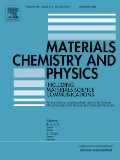
MATERIALS CHEMISTRY AND PHYSICS
Unveiling the Secrets of Material PropertiesMATERIALS CHEMISTRY AND PHYSICS is a leading peer-reviewed journal published by Elsevier Science SA, focusing on the intersection of materials science and condensed matter physics. With an esteemed impact factor and a distinguished reputation in its field, this journal holds a Q1 ranking in Condensed Matter Physics and a Q2 ranking in miscellaneous Materials Science categories as of 2023. Spanning over three decades since its inception in 1983, it provides a vital platform for researchers, professionals, and students to disseminate cutting-edge findings and innovations in materials characterization, properties, and applications. The journal is indexed in Scopus, boasting impressive rankings that reflect its commitment to publishing high-quality research. Although it does not currently offer an Open Access option, it remains an essential resource for those seeking to stay at the forefront of materials chemistry and physics.

Inorganic Materials-Applied Research
Transforming Materials Science with Inorganic DiscoveriesInorganic Materials-Applied Research is a pivotal journal dedicated to the dissemination of innovative research in the field of inorganic materials. Published by SpringerNature, this journal operates as a vital resource for researchers, professionals, and students alike, providing a platform for cutting-edge findings and methodologies related to the synthesis, characterization, and application of inorganic materials. With an ISSN of 2075-1133 and an E-ISSN of 2075-115X, the journal strives to bridge gaps in interdisciplinary studies, fostering collaboration across the engineering and materials science domains. Despite its current rankings placing it in the Q3 quartile for both Engineering and Materials Science categories, the journal aims for broader impact, seeking to enhance its visibility and contribution in publications through rigorous peer-review and open access options. Converged from 2010 to 2024, it remains committed to advancing knowledge and addressing contemporary challenges in materials science, thereby attracting contributions that are not only academically rigorous but also socially impactful.
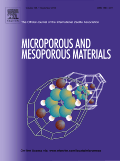
Microporous and Mesoporous Materials
Shaping the Future of Materials ScienceMicroporous and Mesoporous Materials is a leading academic journal published by ELSEVIER, specializing in the field of porosity characterization and applications of microporous and mesoporous materials. With an impactful Q1 ranking in various categories, including Chemistry, Condensed Matter Physics, and Materials Science, this journal serves as a vital resource for researchers, professionals, and students focused on advancing the understanding and application of these materials. Established in 1998 and set to continue its influence until 2024, the journal's rigorous peer-review process ensures the dissemination of high-quality research findings. Additionally, its commitment to open access publishing broadens accessibility, fostering an inclusive community dedicated to innovation in nanoscience, materials physics, and engineering. The journal's Scopus rankings highlight its prestigious standing, placing it among the top percentile within pertinent fields. For those engaged in cutting-edge research or education within these sectors, Microporous and Mesoporous Materials remains an essential journal for current advancements and insights.
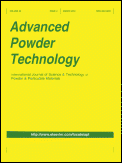
ADVANCED POWDER TECHNOLOGY
Exploring New Frontiers in Material ApplicationsADVANCED POWDER TECHNOLOGY, published by Elsevier, is a premier academic journal dedicated to advancing the field of powder technology and its applications across various domains, such as chemical engineering and materials science. With an ISSN of 0921-8831 and an E-ISSN of 1568-5527, this journal has established itself as a leader in research dissemination, boasting an impressive Q1 ranking in both Chemical Engineering (miscellaneous) and Mechanics of Materials as of 2023. Further enhancing its reputation, it ranks 42nd out of 398 in the field of Mechanics of Materials and 36th out of 273 in General Chemical Engineering, demonstrating its significant impact within these disciplines. With a publishing history spanning from 1990 to 2024, ADVANCED POWDER TECHNOLOGY offers a wealth of knowledge and research findings, positioning itself as an indispensable resource for researchers, professionals, and students eager to explore cutting-edge advancements and applications of powder systems. Access to its latest research is available through institutional subscriptions, ensuring efficiency and support for ongoing academic endeavors.
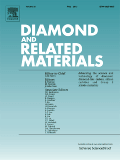
DIAMOND AND RELATED MATERIALS
Unlocking the potential of diamonds and their applications.DIAMOND AND RELATED MATERIALS, published by Elsevier Science SA, serves as a premier international platform for the dissemination of high-quality research in the fields of materials science, electrical engineering, and chemistry, with a specialized focus on diamond and its related materials. With an ISSN of 0925-9635 and an E-ISSN of 1879-0062, this journal has established itself within the top quartiles, reflecting its influential contribution to the scientific community, particularly in the categories of Chemistry (miscellaneous) and Electrical Engineering, among others. The journal's wide scope encompasses both theoretical and applied aspects of diamond research, making it an essential resource for professionals and academics alike. The current rankings position it favorably within its respective disciplines, with a notable 79th percentile in General Physics and Astronomy and strong standings in related categories. Although it does not offer open access, researchers can stay informed of cutting-edge advancements and methodologies through its comprehensive articles and reviews, enriching the wider discourse in advanced materials research.

Journal of the Australian Ceramic Society
Advancing the Science of Ceramics and CompositesThe Journal of the Australian Ceramic Society, with ISSN 2510-1560 and E-ISSN 2510-1579, is a distinguished publication by SPRINGER, dedicated to advancing the field of ceramics and composites. Located in Switzerland, this journal serves as a vital platform for researchers, professionals, and students in the realm of materials science, particularly focusing on the innovative applications and developments within ceramics and materials chemistry. Achieving a Q3 quartile ranking in both the Ceramics and Composites and Materials Chemistry categories in 2023, it reflects its commitment to fostering knowledge exchange and intellectual discourse in these critical areas, as evidenced by its Scopus rankings. Spanning from 2007 to 2024, the journal not only supports rigorous peer-reviewed research but also encourages accessibility to cutting-edge findings, making it an essential resource for anyone engaged in ceramic materials research.
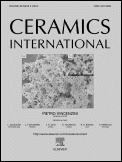
Ceramics International
Discovering the art and science of ceramics.Ceramics International is a premier journal published by ELSEVIER SCI LTD, focusing on advancing the field of materials science with a specific emphasis on ceramics and composites. With an impressive impact factor and a top-tier standing in several critical categories, including Q1 rankings in Ceramics and Composites, Electronic, Optical and Magnetic Materials, and Materials Chemistry, this journal serves as a crucial resource for researchers and professionals alike. Established in 1981, it has consistently showcased cutting-edge research in various domains, including surfaces, coatings, and process chemistry technologies, making it invaluable for those advancing theoretical and practical knowledge in these areas. While access is through subscription, the journal’s rich content, profound insights, and rigorous peer-review process ensure high-quality articles that contribute meaningfully to the scientific community. By fostering innovation and collaboration through rigorous research, Ceramics International stands out as an authoritative source for those dedicated to the evolution of materials science.
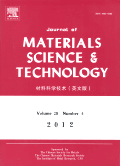
Journal of Materials Science & Technology
Advancing Innovation in Materials ScienceThe Journal of Materials Science & Technology, published by JOURNAL MATER SCI TECHNOL in China, is a leading forum for the latest research in the multidisciplinary field of materials science. With the ISSN 1005-0302 and E-ISSN 1941-1162, this esteemed journal boasts an impressive impact factor and has established itself as a vital resource for professionals, researchers, and students alike. Covering a wide range of topics, including ceramics, composites, materials chemistry, mechanical engineering, and polymers, it has achieved a coveted Q1 ranking in multiple categories as of 2023, reflecting its position in the top tier of scholarly publications. Notably, the journal excels in its Scopus ranks, placing within the top 5% in categories such as Metals and Alloys and Mechanical Engineering. Aiming to foster knowledge and innovation in material development and application, the journal is committed to facilitating groundbreaking research and collaborations that propel the field forward. With its convergence of insights from 1993 to 2025, the Journal of Materials Science & Technology remains an indispensable resource for the advancement of materials science.

Journal of Nano Research
Empowering Research in the Nano RealmThe Journal of Nano Research, published by Trans Tech Publications Ltd, is a distinguished academic journal dedicated to the rapidly evolving field of nanotechnology and materials science. With an ISSN of 1662-5250 and an E-ISSN of 1661-9897, the journal has been an important platform for researchers and professionals since its inception in 2008, continuing to provide high-quality peer-reviewed research through to 2024. Nestled in Switzerland, the Journal of Nano Research plays a pivotal role in disseminating cutting-edge findings, as recognized by its categorization in Q3 for Materials Science and Physics while being positioned in Q4 for Nanoscience and Nanotechnology as of 2023. With Scopus rankings highlighting its impact, including Rank #129 in general Physics and Astronomy and Rank #300 in Materials Science, this journal is crucial for academics seeking to stay ahead in research trends and innovations in nano-related disciplines. Although it operates under a subscription model, the journal's objectives include fostering collaboration and knowledge-sharing among researchers, making it an invaluable resource for anyone immersed in the world of nanotechnology.